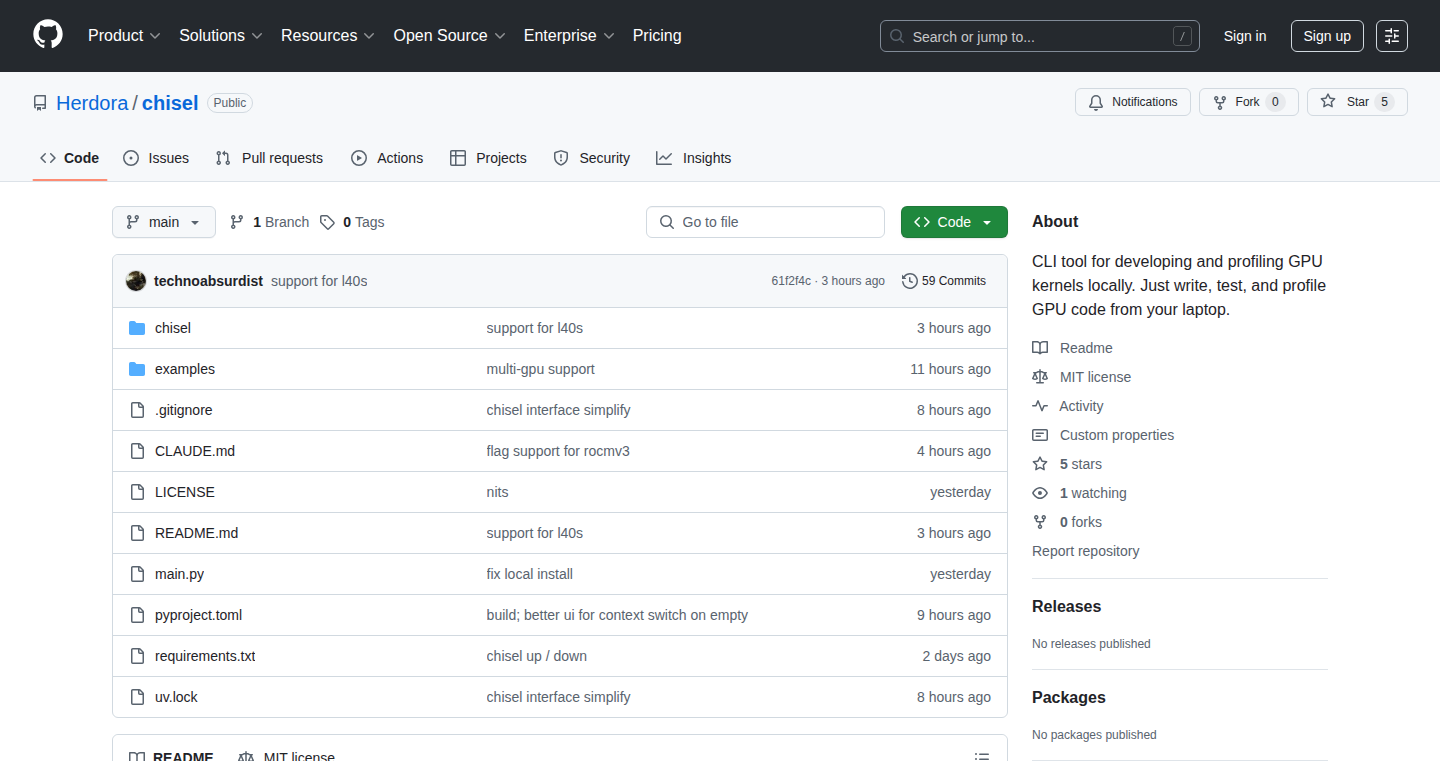

Highlight 1
Chisel tremendously reduces setup time for GPU profiling, allowing developers to focus on optimization rather than infrastructure management.
Highlight 2
The automated SSH and rsync handling eliminates common errors associated with manual operations, making it user-friendly.
Highlight 3
The profiling integration is specifically designed to support AMD architectures, which is unique and beneficial for developers exploring this hardware.

Improvement 1
The documentation could be more detailed, providing examples and best practices to help users get started quickly.
Improvement 2
A more intuitive user interface could enhance usability, especially for new users unfamiliar with the command line.
Improvement 3
Expanding support resources, such as forums or chat options, could enhance community engagement and provide faster troubleshooting.
Product Functionality
Consider enhancing support for additional cloud providers or configurations to cater to a wider range of user preferences.
UI & UX
Implement a dashboard or graphical user interface to simplify user interactions and provide a more visual representation of processes and results.
SEO or Marketing
Increase visibility by producing targeted content marketing around AMD and GPU optimization topics, including blog posts, tutorials, and case studies.
MultiLanguage Support
Adding multilingual support could widen the user base, encouraging contributions and usage from non-English speaking developers.
- 1
What operating systems does Chisel support?
Chisel is designed to work with any operating system that supports Python and the required dependencies, but it primarily targets Linux environments due to its focus on ROCm integration.
- 2
Is Chisel free to use?
Yes, Chisel is available for free as an open-source project on GitHub, and can be installed via pip from PyPI.
- 3
Can I contribute to Chisel?
Absolutely! The developers welcome contributions from the community. You can find guidelines for contributing on the project's GitHub page.
